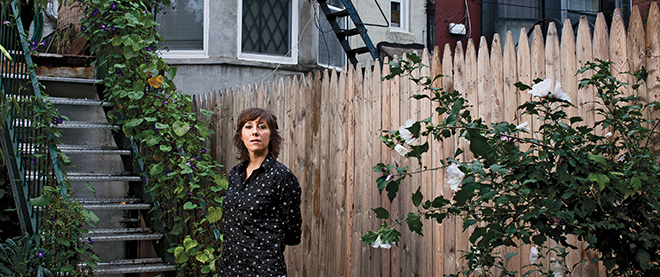Martha Wainwright’s family therapy
On her experimental new album, the singer addresses marriage and motherhood
Stephanie Noritz
Share

Ever since the unrelenting success of Adele’s 21, the pop-music market has been drowning in breakup albums. A flood of new acts ranging from Scotland’s Emeli Sandé to England’s Rebecca Ferguson have been playing the same forlorn chords that ooze from the chart-topping singles Rolling in the Deep and Someone Like You.
Martha Wainwright’s new album, Come Home To Mama, mines similar—but bolder—emotional terrain.
“She’s not a child dealing with ex-boyfriends,” says Yuka Honda, the experimental electronic artist who produced most of Come Home to Mama’s songs. “Martha is a wife, a mother and an artist with so much to say and so much responsibility on her shoulders. It was my duty to capture it all.”
Honda, who used textured arrangements and strings to back Wainwright’s vigorous, three-octave range, wanted to avoid slick production. “On one hand, I didn’t want to repeat what she’s done in the past,” Honda says, referring to Wainwright’s self-titled folk-pop debut in 2005, 2008’s rootsy I Know You’re Married But I’ve Got Feelings Too, and 2009’s live album of Edith Piaf covers. “On the other hand, I knew we couldn’t suffocate her vocals in anything saccharine.”
Honda’s goal was to help craft songs that sounded so intimate the listener would feel like Wainwright’s confidant. To achieve this, Honda insisted on recording the bulk of the tracks in Sean Lennon’s home studio in New York City.
“It was pretty much the best place on Earth for me to get my juices flowing,” Wainwright says on the phone from Montreal. “The house is like a total artist commune. Seven people live there and everyone is up all night doing art projects, taking photos, recording albums and doing modern dance. There were days Yoko Ono would come by and Sean and his girlfriend, [supermodel] Charlotte [Kemp Muhl], were always around giving moral support.”
Many of Wainwright’s new songs address the challenges of being wife to her bassist, Brad Albetta, and mother to two-year-old Arcangelo, as well as the pain of losing her mother, folksinger Kate McGarrigle, to a rare cancer called sarcoma in 2010. Wainwright’s sessions with Honda transformed her musical outlook completely. “Before I started working with her, my songs were folky and very Canadiana- or Americana-sounding. Yuka made me open up.” After hearing a few of Come Home To Mama’s brutally honest tracks—including the divorce anthem Some People—Anna McGarrigle started to worry about the state of her niece’s marriage.
“The first time I heard it, it threw me for a loop,” McGarrigle says about the song Everything Wrong, which includes the lines: My husband’s been lyin’ and cheatin’ / I turned my cheek and reason.
McGarrigle reminded herself that Wainwright takes after her mother and her father, acerbic singer-songwriter Loudon Wainwright III, more than brother Rufus Wainwright does. “Loudon and Kate have often aired their marital problems in their songs, so I think Martha has just continued in that tradition. I feel she’s trying to go for the throat here . . . more so than any of her earlier records. It may be that she sees a lot of her father in herself now that she’s married and has a son.”
Wainwright says there is nothing to worry about. She regards Come Home To Mama’s songs as therapy. “I always take what I am passionate or upset about to the extreme in my songs. Brad and I are very loyal to each other—there are no affairs going on.”
Two of the toughest songs to finish were Proserpina, the last one her mother ever wrote, and All Your Clothes, which she penned a few days after McGarrigle’s funeral, when she was sorting through her mother’s closet.
“It is the most desperate song I’ve written,” Wainwright says. “Surrounding yourself with a dead person’s stuff . . . that’s really hard to be around. Rufus, Kate and I all wore the same size so there were so many memories in those clothes. I kept a few things, like a jacket she made out of old skirts. It’s literally like my coat of many colours.”